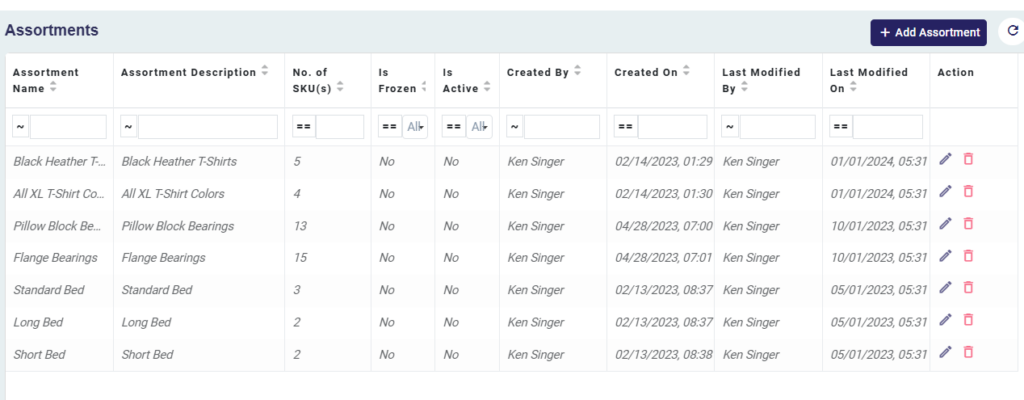Product Assortment: Everything You Need to Know

In today’s competitive marketplace, offering a well-curated product assortment is key to attracting and retaining customers. But what exactly does product assortment entail, and how can it make or break your business? This comprehensive guide covers everything you need to know about product assortment, its importance, strategies, and optimization tips to help you stand out.
Let’s Understanding
Product assortment, often referred to as product mix, is the variety of products that a business offers for sale. It’s not just about having different products but having a range of options that cater to various customer needs and preferences within a product category. A thoughtfully curated assortment can differentiate your brand, fulfill customer needs, and stimulate sales.

Importance of Product Assortment
- Customer Attraction and Retention: Offering a diverse product assortment can attract a wider audience and meet the needs of different market segments, which is essential for customer retention.
- Competitive Advantage: A unique assortment can differentiate your business from competitors, making it a go-to destination for specific product needs.
- Increased Sales: A broader product range increases the chances of cross-selling and up-selling, boosting your sales and revenue.
Types of Assortment for a Product
- Broad Assortment: This involves offering a wide variety of products, appealing to different types of customers. Retail giants like Walmart employ this strategy.
- Deep Assortment: This focuses on providing a deep selection within a particular category. Specialty stores often use this strategy to cater to niche markets.
- Limited Assortment: Here, the focus is on a limited number of products, often at lower prices. Discount stores and limited assortment stores like Aldi use this strategy.
Strategies for Optimizing Product Assortment
- Understand Your Target Market: Research and understand the preferences, needs, and buying behavior of your target market. This insight will guide your assortment decisions.
- Analyze Sales Data: Use sales data to identify top-performing products and categories. This data-driven approach helps in fine-tuning your assortment for better performance.
- Consider Seasonality and Trends: Adjust your assortment based on seasonal demands and emerging trends to stay relevant and meet customer expectations.
- Supplier Relationships: Cultivate good relationships with suppliers to ensure a steady supply of popular products and access to new and exclusive items.
- Regular Review and Adjustment: The market is dynamic, so regularly review and adjust your product assortment based on performance data, market trends, and customer feedback.
The Impact of Digitalization on Product Assortment
In today’s digital age, assortment strategies are shifting as e-commerce platforms become more prevalent. The ability to analyze customer data and preferences enables businesses to tailor their assortments in real-time.
Key Takeaways:
- Online retailers use AI to predict consumer behavior and recommend products.
- Dynamic pricing and inventory control systems ensure that assortments are updated frequently, keeping pace with demand.
For instance, Amazon constantly adjusts its product assortment, showing different products based on location, search history, and customer preferences. This helps them maintain relevance and appeal.
Factors to Consider When Building a Product Assortment
Building a product assortment requires understanding your target market, analyzing competitors, and predicting future trends. Here’s a checklist of things to consider:
| Factor | Explanation |
|---|---|
| Market Research | Analyze customer preferences, purchasing habits, and trends. |
| Competitor Analysis | Understand what similar businesses offer and how to differentiate. |
| Pricing Strategy | Ensure the assortment includes various price points to cater to all. |
| Supply Chain Capabilities | Can you consistently stock the products you plan to offer? |
| Seasonality | Consider offering seasonal items at appropriate times. |
Key Challenges
- Balancing Variety and Overstock: Finding the right balance between offering variety and avoiding excess stock can be challenging.
- Managing Inventory Costs: A larger assortment can lead to higher inventory costs, which requires careful management.
- Keeping Up with Trends: Staying ahead of market trends and continuously adapting the assortment accordingly demands resources and keen market insight.
How to Align Product Assortment with Customer Demographics
Different customer demographics have unique preferences. Understanding these differences and tailoring your assortment accordingly can significantly improve customer engagement and sales.
Key Demographics to Consider:
- Age Groups: Younger consumers may prefer trendy, fast-fashion items, while older customers may seek more classic, timeless products.
- Income Levels: Offer a mix of premium and budget-friendly options, ensuring that all income brackets are catered for.
- Geography: In urban areas, tech gadgets may be in higher demand, while rural areas might prefer more practical and durable goods.
Conclusion
Crafting an effective product assortment strategy is vital for any retail business aiming to thrive in today’s market. By understanding your customers, analyzing sales data, and staying flexible to adapt to changes, you can create a product assortment that not only attracts customers but also boosts your sales and enhances your brand’s value. Remember, in the realm of retail, variety can indeed be the spice of life.
Discover how Bluemeteor Product Content Cloud can help streamline and enhance your product offerings with smarter, data-driven strategies.
Get a demo today and see how we can boost your product assortment management and drive sales growth.




